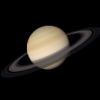Hi everyone,
I would appreciate some advice from you guys. I have developed a tool for turning normal photos into what look like digital paintings. It is actually an extension of a video-to-cartoon project, but it works extremely well on photos of buildings & scenery, giving a look rather like I have seen in a lot of games.
I was wondering if this would be of use to the gaming industry for things like backdrops. As well as being a great time saving tool (just a few clicks) it produces quite stunning digital art images at zero cost.
It has not been released publicly but here are some "before & after" samples of what it can do:
http://tinyurl.com/m5ep8sz
http://tinyurl.com/m3pgkt5
http://tinyurl.com/n2w9q9j
http://tinyurl.com/mxqbs7q
http://tinyurl.com/kbb3y82
http://tinyurl.com/kw7ufvh
http://tinyurl.com/m6qj7rd
http://tinyurl.com/my6pww2
http://tinyurl.com/muh2uc7
http://tinyurl.com/lutjgar
I would be grateful for any advice on whether this would be of interest to game makers.
Thank you.
Photos Converted To Digital Art
Most impressive. This has a lot of potential if you market it correctly.
The first target audience for this kind of software that comes to mind are artists working in point-and-click\hidden-object adventure games. They go through several passes just to get that illustrated look from pre-rendered 3D objects, and a tool like this would save a lot of time. Especially if it's highly parametric, meaning you can customize looks and develop themes so an artist can rely on it for various projects with different art directions.
This kind of games has focus on the background and objects placed on it, that's why this sort of tool should work well for them.
I think the images it produces have too much noise and contrast to work comfortably as "backdrop" type backgrounds, where the action occurs in a different plane (the foreground). For these games you'd have to bring the contrast down a bit.
You would have to advertise it on websites for game artists to create a lot of awareness; it's pertinent to the "2D" and "Technical Talk" areas.
Some forum suggestions:
That is really cool! This is the kind of thing I'd expect to see at a SIGGRAPH conference ![]()
These kinds of software are usually quite poor, but your results are remarkable! What kind of processing time goes into making those photos?
If the processing time is low enough, my first thought to commercialize it would be to turn it into a web app. Put ads on there and offer free image conversions for low resolution, and with less options (no choice of colour schemes, etc), and offer subscriptions/etc to use all the features. If the CPU resources are too much though, then you'd end up paying more for cloud hosting than you'd make off ads though ![]()
Most modern 3D games have moved away from static hand-drawn backgrounds... but they are still popular with 2D mobile games. If you sold this software at a low price, you might get some interest from them.
Thanks for the replies, guys. Your advice will be very helpful.
Hodgman, the processing is very slow unfortunately. Depending on the speed of the computer, it can take anything from 10-30 minutes to create pictures at those resolutions, and it is very processor intensive. But if there are lots of pictures to convert, they can just be batch processed. That is what I do when making videos, which are usually made at 25 frames per second. I just leave the computer working away at the frames overnight. And the work can be shared out between several computers, which cuts the overall time.
It was actually a game (The Last Express) that first gave me the idea for this. I was fascinated by the way the makers used real people to create the cartoon style characters from, and I decided to look for ways of doing that automatically.
Kryzon, I take your point about the contrast being inappropriate for backgrounds. The pictures would need to be much lower impact.
Thanks again.
Very nice. I actually tried to duplicate the results with Photoshop. Auto Levels, serious Hue Saturation boost, very thin Accented Edges and cautious Smart Blur will get me close but your edge detection is just beyond what Photoshop has. It appears you're also drawing edges with the color you get from edge/area detection which just isn't possible with Photoshop.That digital art look needs serious blurring and without good edge detection you just can't do it. :)
As well as being a great time saving tool (just a few clicks) it produces quite stunning digital art images at zero cost.
But I feel this is a bit of marketing. You'd still need a very high resolution and high quality photo without much color noise, chromatic aberration, lense distortion etc. And of course you need to find IRL scene with the right atmosphere to photograph for your game.
Anyway, fantastic work and while I haven't done 2D that much maybe there's a place for this in the market.
That's really cool. I actually worked on a project remotely similar once, where I stumbled upon a similar type of effect processing photos. But what I had was much more "artsy" looking, ended up a bit more abstract looking at times, and definitely was nowhere near as refined and awesome as this. I couldn't legally distribute either since it wasn't done on my own time. I hope you don't try to obtain some kind of patent; it would be a crime for anyone to deny the "open" community of such a capability. (Not to say that you shouldn't try to profit from it at all.) But yes--very, very cool!
I'd be really interested in seeing some more "fantasy" (gaming themed) type settings such as renaissance fairs or similar costume type gatherings to see how they turn out.
Would be nice to see a paper on the technique. I wonder how much performance could increase with compute shaders or just a standard graphics pipeline.
It appears you're also drawing edges with the color you get from edge/area detection which just isn't possible with Photoshop.That digital art look needs serious blurring and without good edge detection you just can't do it.
Yes, that is a good observation. The edges are a very important aspect of this - they are essential to getting that cartoon style appearance, and to the high detail level.
I'd be really interested in seeing some more "fantasy" (gaming themed) type settings such as renaissance fairs or similar costume type gatherings to see how they turn out.
Check out this one:
Would be nice to see a paper on the technique. I wonder how much performance could increase with compute shaders or just a standard graphics pipeline.
I've nerver tried anything like that, but I will keep it in mind.






